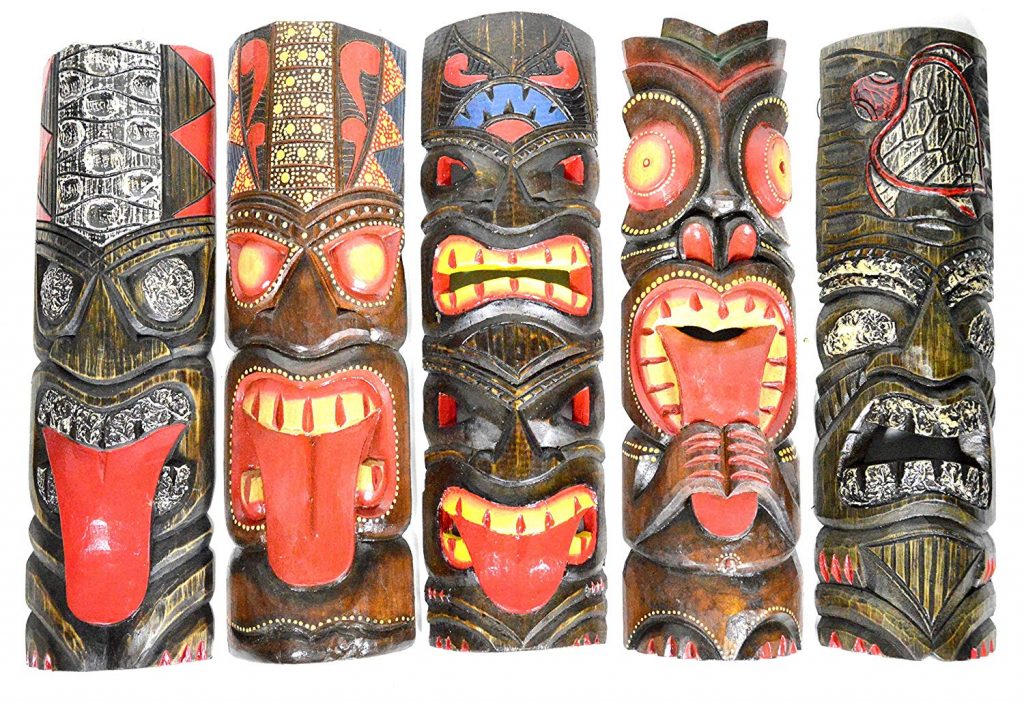Historically and geographically, Tiki is defined by Polynesian culture – specifically, Tiki was the first man on Earth, according to most cultures. But that’s not what 20th & 21st Century Tiki Culture in America (and most of the world) is about now.
As for Tiki Culture today, you’ll get different answers depending on who you talk to, and from what part of the states they hail. Tiki purists will tell you that Tiki is the genre inspired by 1930s to 1950s Hawaiian and Polynesian pop styles, blending these cultures with specific types of drinks, food and décor. Dark woods, thatch, rattan and bamboo make up the basic building blocks of the décor and furniture. Tropical plants, waterfalls, hand-carved Tiki gods and Moai, along with nautical accents arranged in a somewhat mysterious display reminiscent of foreign lands make up an atmosphere of true Tiki. Dancing Hula girls and fire-eating island men provide the exotic entertainment, set to jazz-influenced, drum-heavy island music. Food is an Americanized combination of South Pacific and Asian cuisine; drinks are mostly rum-based, complex, fairly strong and are not really supposed to be sweet. Tropical Cocktails are at the
Anything made of plastic, with the exception of swizzle sticks, is taboo. If it wasn’t in a Tiki bar in the ’50s, it’s not authentic. However unless you are a true purist, a few fun plastic Tiki cups and paper cut outs from the party store can transform any room into your own Tiki haven without blowing the kids’ college fund on bamboo furniture and ceramic mugs.
